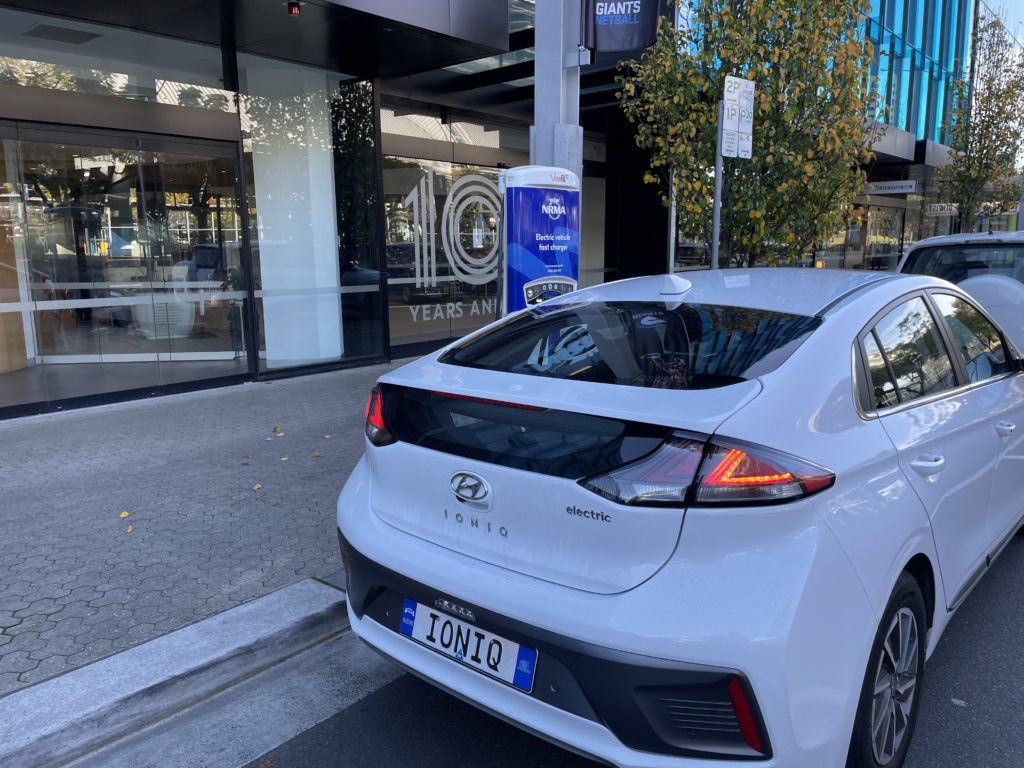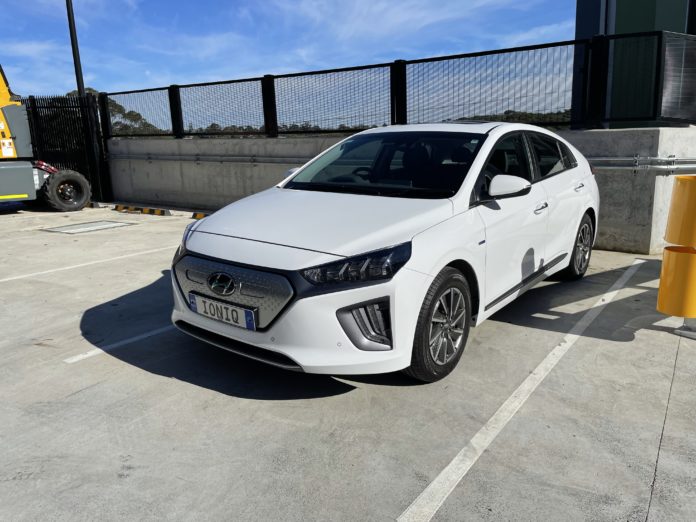For those who’ve been following Ausdroid a bit over the last year, you’ll remember we’ve taken a few cars for a spin to see what kind of technology can be found on the road these days. A particular focus has been on electric vehicles which we believe – as do many others – will be the future of motoring in Australia and around the world.
Why? Surely you can read about these things on CarAdvice or Whatcar or something, right? Why would Ausdroid deviate from its core audience – personal technology, like mobiles – and talk about cars which people don’t really come here to read about?
That’s simple. Personal technology doesn’t start and stop with what fits in your pocket. While things are a little different in 2021 with COVID lockdowns affecting most of the eastern states, typically Australians spend a fair amount of time in their cars, and as a result, we want to be safe, comfortable, and entertained while we do so.
At a more personal level, I have a big issue with paying as much as $70 a week to put liquified dinosaurs in my car, converting it to harmful emissions which aren’t too great for the environment. Not only do I despise the cost, but it’s a stark reminder of how much our daily lives can impact the environment, too.
Having already reviewed Tesla’s Model 3 and MG’s ZS EV earlier in the year, I honestly hadn’t really considered the Hyundai Ioniq. It’s been around a while, and – at least in its earlier incarnations – it didn’t seem especially interesting.
The 2021 Ioniq is far from that original model, though.

Not only is it a capable EV and – I’d argue – one of the best available in Australia, but it’s also filled to the brim with technology that you mightn’t find in EVs. This makes the Hyundai Ioniq one of the most desirable EVs you can buy today, being a pretty much perfect compromise between cost, feature, functionality, battery range and comfort.
For example, unlike the Tesla Model 3, Hyundai’s Ioniq Electric comes with Android Auto and Apple CarPlay. You don’t have to use Tesla’s interface to be entertained in your car, you can easily listen to your Spotify library, YouTube Music collection, or really any other audio app compatible with Android Auto / CarPlay. You can also use your choice of maps – Waze, Google Maps, Apple Maps, or whatever you like.
Sure, the Tesla car interface isn’t bad – in fact I rather like it – but having a familiar interface is important to lots of people, and Android Auto / CarPlay is a big part of that.
This brings me to something else I like about the Ioniq which, in the Tesla, was a little jarring. That is, the Ioniq mixes the futuristic look of an EV with enough familiar signposts of modern cars so that it’s a little more familiar.

For example, there’s a traditional instrument cluster (although it is all digital), you change gears with a fly-by-wire set of buttons where a normal gear lever would be, there’s cup holders everywhere, and – for the most part – it’s just like any other mid-range car. This is good, because you don’t need to be familiar with the particular car to drive it. Get into a Tesla if you’ve never driven one before, and it might be a bit confusing.
Call me a fuddy-duddy, but I prefer to have the car’s current speed shown right in my centre of vision so I can easily tell what speed I’m going. Having to look down and to the left (as in a Tesla) strikes me as rather unsafe.

The Ioniq pairs this familiar feeling with all the bells and whistles you’d expect to find in a top-flight EV in 2021:
- Autonomous driving level 2 – adaptive cruise control with self-steering/lane keeping
- Heated and ventilated seats
- Heated steering wheel
- DAB digital radio, Apple Carplay and Android Auto
- Three stages of regenerative braking to capture energy when coasting / descending
- Sun roof, automatic windows on all windows, and a giant boot
Yes, the Ioniq doesn’t have a frunk, but the boot is enormous; easily capable of fitting everything that fits in the boot of my station wagon during the week.
What it does have, though, is an electric range of 311km on a full charge, a 38kWh battery that can charge overnight from a 7kW wall box (or a bit longer if you’re stuck with 10A AC charging), and a pleasant if not overly sporty drive that is comfortable, pleasant and safe.
If you really plant your foot, the Ioniq will leap off at the lights if you want a burst of EV speed, but it’s no match for the Tesla’s ludicrous speed … but who really genuinely needs that? If the Tesla was the car for EV showoffs, the Ioniq Electric is the car for someone who wants an EV because its better to drive and better for the environment. It also happens to be a bit cheaper.
The model reviewed – an Ioniq Electric Premium – can be on the road for $58,655 at the time of writing. Come 1 September, and the car attracts free stamp duty and a $3000 NSW government incentive, reducing that price to around $53,900 give or take.

While the Ioniq is a touch more expensive than the cheapest EV in Australia – the MG ZS EV – it offers a number of compelling points that make the MG a much less appealing proposition, despite its cheaper price:
- The MG ZS EV’s in-car entertainment system is not so great. It’s slow to respond and has a weird thing with Bluetooth phone calls. The Ioniq’s native system is really good and responsive, meaning that if you don’t use CarPlay or Android Auto, it’s still very good to use.
- The ZS EV range is relatively less; around 260km vs the Ioniq’s 311km. The Ioniq also seems to get much closer to its stated range, the ZS EV did not, achieving closer to 190km on a full charge. Fine for around town, but not much good if you’re going further.
- The Ioniq is very easy to charge; it’s charge port is located where the petrol fill inlet would be on a standard car, whereas the ZS EV charges through its nose. While that might sound better, it’s actually a very impractical place for it and in the dark it can be near impossible to plug the charger in. The Ioniq also charges a little faster thanks to its maximum 100kW charging capacity against the ZS EV’s 50kW.
- The Ioniq has a fully automatic single-zone climate control system; for many, this would be preferable, but some may prefer the more simple controls of the ZS EV – fan speed, hot and cold, and that’s about it. It does have heated seats too, which are much more energy efficient.
- I’d argue the Ioniq has a more usable space too, and it’s a bit more comfortable inside; while the ZS EV has a full-length sunroof, there’s not a solid internal roof meaning that, in summer, you’d get quite warm inside. The Ioniq can black out the sun roof. Both cars are comfortable inside, with a premium leather-ish trim, but the Ioniq’s boot is definitely the larger of the two.
Where the ZS EV comes out swinging, of course, is the price; it’s $44,990 drive away before any incentives; with the incentives, you’d probably buy one under $40,000 and that’s quite a bit cheaper than the Ioniq’s $53,900.
Both cars are quite a bit cheaper than other EVs on the market, such as Tesla’s Model 3 (but not by much), Hyundai’s Kona and Kia’s Niro (which are basically the same thing), and the fancier EVs from the likes of Jaguar, Mercedes and so on.
If you want an EV without breaking the bank, the MG ZS EV is undoubtedly the way to do it. If you need a bit more range, spend a bit more time in the car, and are a bit more demanding from your in-car entertainment, the ZS EV probably won’t do, though, and that’s where the Hyundai Ioniq is a killer.
It’s the perfect balance of feature, form, comfort and entertainment, in a safe, easy to drive package that won’t feel like you’re in a UFO.





Chris, the section opened with “Call me a fuddy-duddy”, isn’t something optional. It’s actually part of the vehicle ADRs that are Law in Australia. I remember the media reports from when BMW bought out their first generation MINI, and fell afoul of that ADR, so for the Australian market they had to add an instrument binnacle to the dash, centred behind the steering wheel to be compliant to the ADR.
Link
– ParlInfo – Motor Vehicle Standards Act – Road Vehicle (National Standards) Determination No. 2 of 2004, together with Explanatory Statement and Regulation Impact Statement.:
– https://parlinfo.aph.gov.au/parlInfo/search/display/display.w3p;query=Id%3A%22publications%2Ftabledpapers%2FHSTP01788_2004-07%22;src1=sm1
Good review, thanks.
Good review. One error, the Ioniq DC charge rate tops out at 50kW not 100kW.